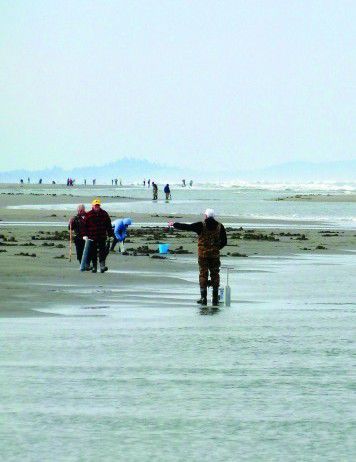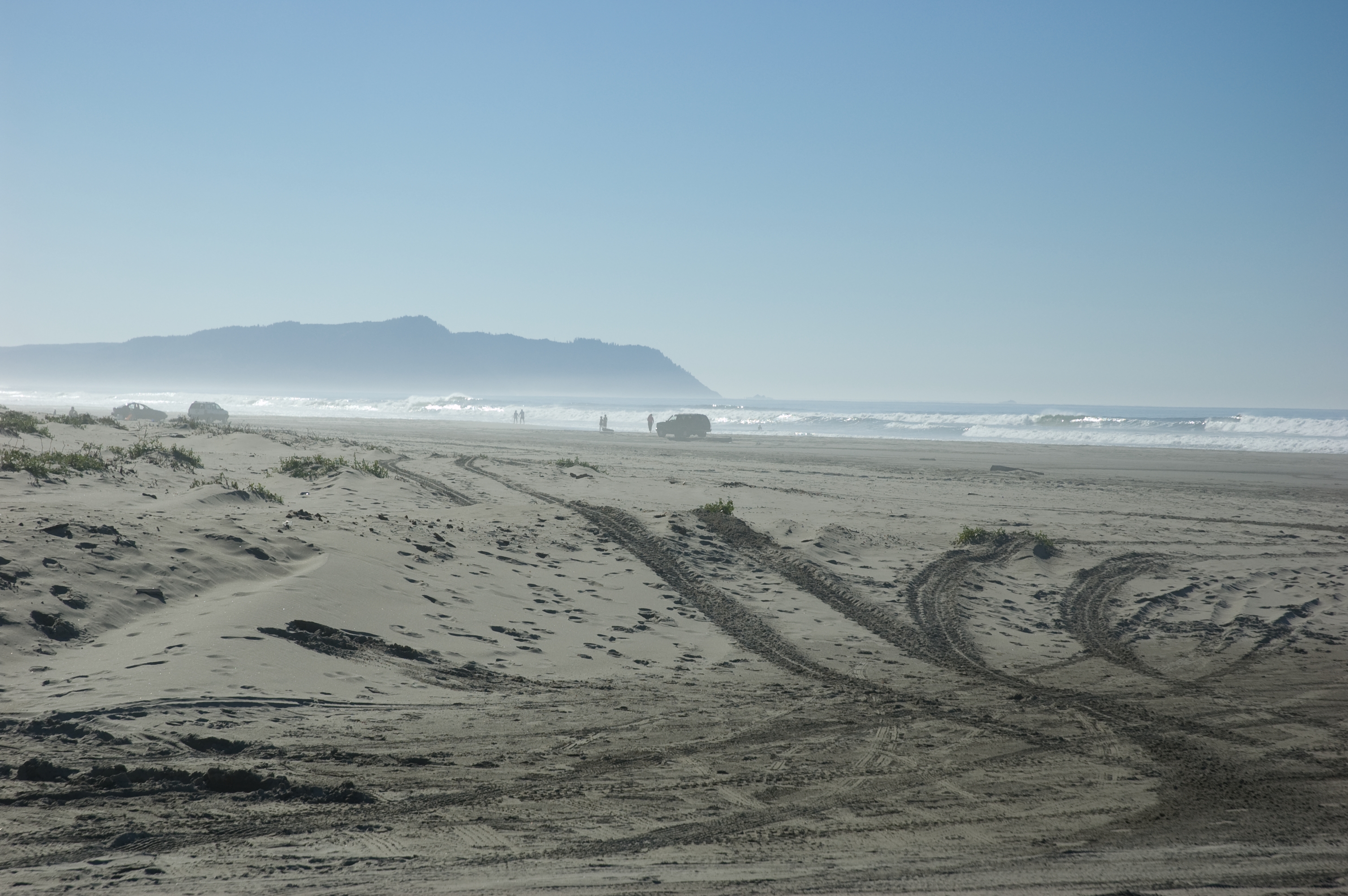A stellar weekend on the clam beds
Published 7:03 am Thursday, May 26, 2011

- Dozens of hardy clam diggers gather on the beach north of Oysterville, Wash.
We dig clams under a golden burst of sunlight, rays and sun motes shimmering and dancing, saturating the tidal flats like a rare movie with a happy ending. Exuberant, three friends wade across a sapphire pool of ocean backwater, their silhouettes stark as black ink calligraphy all this playing out against a backdrop of sun-reflected rivulets, sand bars and ocean. The falling moon is faint but full. We will feast later on eggs and razor clams if we are lucky. Even now, we feel confident.
It is the end of April. Standing on the north end of the Long Beach, Wash., Peninsula on the ocean side of Leadbetter State Park squinting into the rich morning light one can imagine that springtime is well on its way.
The razor clams are deep in the sand and quick to escape these human beings with extraction equipment. Though a lifetime advocate of the clam shovel, today arthritis flaring I choose instead a clam gun. Angling at about 15 percent toward the ocean, I cut through the heavy gray sand, once and twice and rapidly. On the third pass finger covering the gun’s half-inch air hole I pull up a plump razor. It is about five inches in length and smells pleasantly of ocean and sand.
Within minutes I have six. I stop and spot my friends, bent double and extricating more of the brown-lacquered bivalves. Andrew, with mountain man instincts, steps and turns my way, makes a peace sign with two fingers and then returns to his mission. I have begun to discipline myself to “smell the flowers” in other words, to stop my predator trappings and take in the stunning landscape, slowly, slowly, with eyes wide open.
We are digging on a small spit of sand. It appears flat and plain, but the truth is of another nature. Camouflaged on the sand are smatterings of flotsam: clam shells, seaweed (kelp). Faded-red claws and backs of Dungeness crab. A seagull feather. A dead fish (picked apart by gulls). Sand dollars, drift logs and, much to my surprise, the carcass of a deer. That carcass has become a rendezvous spot for the raptors: seagulls and crows, ravens and the majestic eagle, all in descending order. All the smaller raptors clear for the eagles. The great birds gorge on the stringy red flesh, somewhat preserved by salt water.
Later, after digging three limits of clams, the three amigos will draw forth cameras like modern-day six-shooters and attempt, without telephoto lenses, to capture God’s creatures, big and small. The birds gather, in a seemingly social fashion, by the carrion.
We drive south to the Oysterville Approach, and then head directly east to Dan Driscoll’s oyster house, called Willabay. This is our second mission. Before we reach Seaview and clean and prepare the clams, it is deemed crucial that we sample some of Dan’s Pacific and Kumamoto oysters, raw of course, with or without a squeeze of lemon. “A chef’s breakfast,” I say to my friend Andrew, as he slurps down a half-dozen of the fresh Willapa Bay oysters, a smile widening on his intense face with each additional oyster.
The vista from the oyster house remains as mouth-watering as the oysters. From the small deck, an observer can eyeball a good part of Pacific County, from Tokeland on the north end of the bay to the isthmus of the Peninsula to the south, with Saddle Mountain towering above all, far and away in Oregon. Willapa Bay is responsible for the production of about 20 percent of the nation’s oysters, and today, with the tide pulled back like a giant blanket, the view is grand and scintillating. There is Bay Center at 12 o’clock (directly east of Oysterville) and the tip of that peninsula called Goose Point. South and up the center of the bay is Long Island, the jewel of the bay. Leadbetter Point State Park is a short drive north from Oysterville, and today, a smattering of cumulus shadow the shallow-water bay just off the point.
We clean the clams 30 minutes later, a chore not really as unpleasant as all the hype about dirty hands. As we clean, we discuss preparations. A favorite is the flour-dip, egg-wash and Panko or cracker roll. Messy, yes; but once pan-fried, the clams delight locals and tourists alike, delight the hunter-gatherer in us all. My wife prefers chowder, but we dip our clams in rice flour and sauté the tender flesh in a nonstick pan in small amounts of olive oil and minced garlic. There are no complaints.
We whip up a Cajun mayo: jalapeno Tabasco, ketchup and Cajun spices, and eat the morsels as quickly as the clams fall onto warm plates, or pluck them from fire to mouth like those hungry vultures we met on the beach.
Try as I might, I can’t imagine a better morning: sunstruck, framed by silver and white-capped surf, treasure-littered sands and those delectable razor clams, all for the price of two gallons of gasoline and a simple smile.









